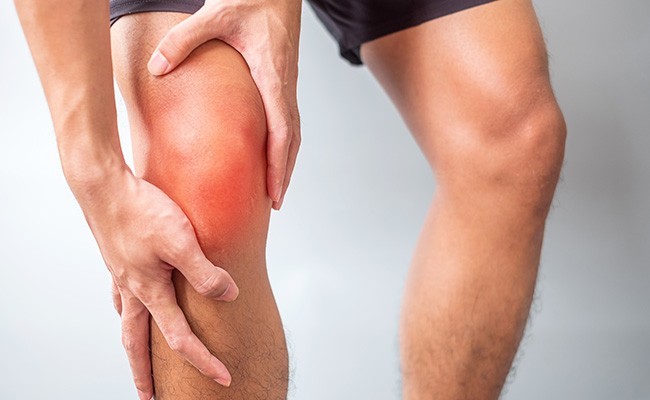
Patellar tendinopathy II. Role of eccentric training in treatment and prevention.
- 10/01/2023
What is an eccentric muscle contraction?
We define an eccentric contraction as a muscle contraction in which the ends of the muscle move apart, overcome by an external force that exceeds the contractile force of the muscle itself. This type of contraction involves muscle tension and simultaneously lengthening of the muscle fiber.
Why is eccentric training beneficial for patellar tendinopathy?
Pain relief achieved through eccentric training has been demonstrated exclusively in Achilles tendinopathy, although excellent results have been obtained applying eccentric training to other types of tendinopathy, such as supraspinatus tendinopathy or, in this case, patellar tendinopathy.
Although there is no scientific evidence of the histological adaptations that eccentric training causes in the affected tendons, its benefits have been observed in the form of pain reduction, increased resistance, and decreased fragility and thinning.
There are several hypotheses that attempt to explain the benefits of eccentric training:
- Tender tendon thickness, with improved tensile capacity.
- Reduction in tension by lengthening the musculotendinous unit.
- Collapse and disappearance of neovascularization and neoinnervation associated with tendinopathy, leading to reduced pain.
How is patellar tendinopathy treated in the acute phase?
- Preconditioning: Bicycle or non-impact exercise.
- Manual therapy:
- Quadriceps release massage.
- Patella mobilization + tendon warm-up prior to the session or physical activity.
- Transverse and longitudinal tendon extensibility training in cases of paratendinous involvement.
- Active tension stretching of the quadriceps and posterior chain.
- Eccentric exercises: proven to be useful, eccentric training produces greater hypertrophy than concentric or isometric training.
- Protocol duration: 12 weeks. If the athlete is in the recovery phase, the program will continue for 12 weeks from that point.
- Exercise twice a day, 7 days a week.
- 10 repetitions per set, for a total of 6 sets, performing the lowering (eccentric phase) on the affected leg or both legs, and the raising (concentric phase) on the healthy leg or both legs.
- Manual eccentric training: The athlete sits on a stretcher with the knee extended, maintaining an isometric quadriceps contraction. The therapist will flex the knee to generate an eccentric contraction. It is essential to respect the player's pain (exercise limit). 4 sets of 12 repetitions, alternating speed.
The tolerance of manual eccentric training will allow us to continue with the rest of the eccentric exercises detailed below:
- Eccentric training with a Russian belt or muscle strap: Perform a pain-free range of motion, with only the lowering (eccentric) phase held for 3-4 seconds.
- Eccentric training with a Russian belt or muscle strap: Identical to the previous exercise, but with lowering and raising phases (at a faster speed than the lowering).
- Eccentric training with a Russian belt or muscle strap with electrostimulation: Exercise no. 1 but with quadriceps electrostimulation.
- Eccentric with machines: knee extension, paying special attention to the eccentric phase. Can be performed with or without electrostimulation. Slow down the descent phase and fast up the descent.
- Eccentric on an inclined plane: The athlete looks down at the slope and performs a quarter of a single-leg squat. The descent phase is only pain-free, maintaining a 15° flexion for 3 to 4 seconds.
- Eccentric on an inclined plane with mechanical vibration.
How is chronic patellar tendinopathy treated?
- Preconditioning: Identical to that of the acute phase.
- Cycling or low-impact exercise.
- Manual therapy:
- Quadriceps release massage.
- Patella mobilization + tendon warm-up prior to the session or physical activity.
- Transverse and longitudinal tendon extensibility exercises in cases of paratendinous involvement.
- Active tension stretches of the quadriceps and posterior chain.
- Eccentric exercises:
- Manual eccentric exercises: The athlete sits on a stretcher with the knee extended while maintaining isometric contraction of the quadriceps. The therapist will flex the knee to generate an eccentric contraction. It is essential to respect the player's pain (exercise limits). 4 sets of 15 repetitions, alternating speed.
- The first sessions reproduce the exercises as explained for the acute phase (exercise 1), then move on to exercises 4, 5, and 6 before rehabilitation or return to activity.
- Electrotherapy is used after eccentric training sessions or at the end of sports activities (galvanic currents, ultrasound, or TENS combined with cryotherapy).
How can we prevent patellar tendinopathy?
There is scientific evidence showing that simultaneous strengthening and stretching of the musculoskeletal system is preventative for certain types of injuries.
Some recommendations for preventing patellar tendinopathy in sports include:
- Biomechanical analysis of gait and running, and study of the mechanical axis of the knee.
- Analysis of the footwear worn by the athlete.
- Analysis of the surfaces on which the activities are performed.
- Specific warm-ups prior to sessions, with special recommendations for active tension stretching at the beginning of the activity and passive stretching at the end. Activity.
- Eccentric exercise program for patellar tendinopathy twice a week. 6 sets of 10 repetitions with each leg (exercises 1 and 2).
Make an appointment with Dr. Jordi Jiménez. He will see you in the center of Palma and help you regain your quality of life.
Clinical practice guide for tendinopathies: diagnosis, treatment, and prevention.
FC Barcelona Medical Services.
Apunts Medicina de l'Esport. 2012;47(176):143-168

![[VIDEO] Ultrasound-Guided Injection for Trigger Finger](https://drjordijimenez.com/imagen/100/100/Imagenes/infiltracion-ecoguidada-dedo-resorte-drjordijimenez.jpg)
![[VIDEO] Ultrasound-guided infiltration of the lumbar facets](https://drjordijimenez.com/imagen/100/100/imagenes-pagina/sindrome-facetario-lumbar-drjordijimenez (1).jpg)
![[VIDEO] Ultrasound-guided infiltration of the hip joint](https://drjordijimenez.com/imagen/100/100/Imagenes/valgo-dinamico-rodilla-drjordijimenez.jpg)